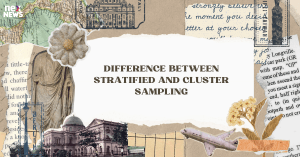Sampling is a crucial aspect of research, determining the reliability and validity of study findings. Choosing the right sampling method is vital for accurate and meaningful results. In this article, we'll delve into the distinctions between two major sampling approaches: probability and non-probability sampling.
Introduction
In the vast realm of research methodologies, the selection of a suitable sampling method holds paramount importance. Whether it's a scientific study or a market research endeavor, understanding the fundamental differences between probability and non-probability sampling is essential.
Probability Sampling
Probability sampling involves selecting a sample from a population using a method based on the concept of randomness. This method ensures that each member of the population has an equal chance of being included in the sample. There are various types of probability sampling, each with its unique characteristics and applications.
Types of Probability Sampling
- Simple Random Sampling
- Every individual in the population has an equal chance of being selected.
- Stratified Random Sampling
- Population is divided into subgroups (strata) based on certain characteristics, and samples are randomly selected from each stratum.
- Systematic Random Sampling
- Individuals are chosen at regular intervals from a list after selecting a random starting point.
- Cluster Random Sampling
- Population is divided into clusters, and entire clusters are randomly selected.
Non-Probability Sampling
In contrast, non-probability sampling doesn't rely on randomness and equal chances. This method involves the researcher's judgment or the availability of subjects. It is often used in situations where random selection is challenging or impractical.
Types of Non-Probability Sampling
- Convenience Sampling
- Selection based on the ease of access to participants.
- Purposive Sampling
- Participants are chosen based on specific criteria related to the research objectives.
- Snowball Sampling
- Existing participants refer others for inclusion in the study.
- Quota Sampling
- Participants are selected to meet predefined quotas based on certain characteristics.
Differences Between Probability and Non-Probability Sampling
Understanding the disparities between these two sampling methods is crucial for researchers aiming to design robust studies. Let's explore the key differences:
Precision and Accuracy
Probability sampling tends to provide more precise and accurate results due to its reliance on random selection, ensuring a representative sample. Non-probability sampling may introduce biases, impacting precision.
Representativeness
Probability sampling aims for a representative sample that mirrors the population's characteristics. Non-probability sampling may lead to underrepresentation or overrepresentation of certain groups.
Generalizability
The results obtained through probability sampling are generally more applicable to the broader population. Non-probability sampling may limit the generalizability of findings to a specific context.
Randomness
Probability sampling relies on random selection, minimizing researcher bias. Non-probability sampling lacks randomness, making it susceptible to researcher subjectivity.
Statistical Inferences
Probability sampling allows for robust statistical analyses and inferences. Non-probability sampling may pose challenges in making broader statistical claims.
Consideration Factors for Choosing Between Probability and Non-Probability Sampling
Deciding between these two methods requires careful consideration of various factors:
Nature of the Research
The type of research question and objectives play a significant role in selecting the appropriate sampling method.
Resource Constraints
Consideration of available resources, including time and budget, is crucial. Probability sampling may require more resources.
Time Constraints
The urgency of the research may influence the choice of sampling method. Non-probability sampling is often quicker.
Research Objectives
The specific goals of the study will guide the selection of the most suitable sampling approach.
Real-World Applications
To better grasp the practical implications, let's examine examples of studies utilizing each method.
Examples of Probability Sampling Studies
In a health study aiming to understand the prevalence of a disease in a population, stratified random sampling could be employed to ensure representation from various demographic groups.
Examples of Non-Probability Sampling Studies
In a qualitative study exploring individuals' experiences with a specific therapy, purposive sampling might be more appropriate to capture diverse perspectives.
Best Practices for Each Method
Ensuring the effectiveness of each sampling method requires adherence to certain guidelines.
Tips for Conducting Effective Probability Sampling
- Rigorously define the population and ensure each member has an equal chance of selection.
- Employ appropriate randomization techniques.
- Validate the representativeness of the sample.
Tips for Conducting Effective Non-Probability Sampling
- Clearly define the criteria for participant selection.
- Be transparent about potential biases.
- Validate the relevance of chosen participants to the research objectives.
Case Studies
Examining successful applications of each sampling method provides valuable insights.
Success Stories of Probability Sampling
A groundbreaking epidemiological study used cluster random sampling to identify patterns of disease prevalence in a large urban population.
Success Stories of Non-Probability Sampling
A market research study employed convenience sampling to quickly gather opinions on a new product, allowing for rapid decision-making.
Challenges in Sampling
Both probability and non-probability sampling methods come with their share of challenges.
Common Challenges in Probability Sampling
- Difficulty in achieving true randomness.
- Resource-intensive processes.
Common Challenges in Non-Probability Sampling
- Potential for selection bias.
- Limited generalizability.
Mitigation Strategies
Researchers can adopt various strategies to address these challenges, including advanced randomization techniques and thorough participant screening.
The Future of Sampling in Research
As technology continues to advance, so do sampling methodologies.
Emerging Trends in Sampling Methodologies
The integration of artificial intelligence and big data analytics is revolutionizing sampling techniques, enhancing precision and efficiency.
Technological Advancements and Their Impact
Advancements in data collection tools and analytics software are streamlining the sampling process, enabling researchers to gather and analyze vast amounts of data with unprecedented accuracy.
Conclusion
In the dynamic landscape of research, the choice between probability and non-probability sampling is not a one-size-fits-all decision. Researchers must carefully evaluate the nature of their study, available resources, and research objectives to make an informed choice. Both methods have their strengths and limitations, and understanding these nuances is key to conducting robust and meaningful research.






















POST A COMMENT (0)
All Comments (0)
Replies (0)